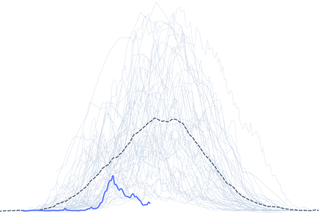New research compares model simulations to satellite data to show that while a frequently used model captures some aspects of real cloud behavior, it struggles to accurately represent certain types of clouds, like those found closer to the Earth’s surface.
It’s been 50 years since the first attempt to forecast the El Niño/Southern Oscillation (ENSO). The initial prediction was incorrect, but it marked the beginning of a journey toward understanding and predicting one of Earth’s most influential climate phenomena.
Yes, but only to a small degree. This is the conclusion of a new research article published today in the journal Science Advances that authors have dubbed “intentional stratospheric dehydration.”
A new study describes how Earth System Models represent ocean convection in the Labrador Sea, a crucial site for understanding climate variability. The study pinpoints biases in both oceanic and atmospheric model components affecting climate.
The capacity for moisture in the air usually increases with temperature, but humidity unexpectedly decreased in the southwest from 1970-2019, effectively drying the air during the summer forest fire season.
Scientists are gearing up for a busy season at sea with three research cruises departing in the month of February. Cruises will collect samples from the surface to the depths of the ocean and improve our understanding of ocean circulation, carbon uptake, biological conditions, and climate variability
Interactions between the ocean and atmosphere shape weather patterns and temperatures around the world. Yet the winter upper troposphere/lower stratosphere temperature/vertical interactions are not fully understood. A new study corrects climate-model biases to unravel atmospheric impacts.
A new study will investigate the connections between North Atlantic sea surface temperature variability and high-impact climate events in the Eastern and Central United States during summer.
The mix of landfalling tropical cyclones and ensuing blackouts exacerbates vulnerability to extreme heat. Climate change is projected to worsen both hazards.
